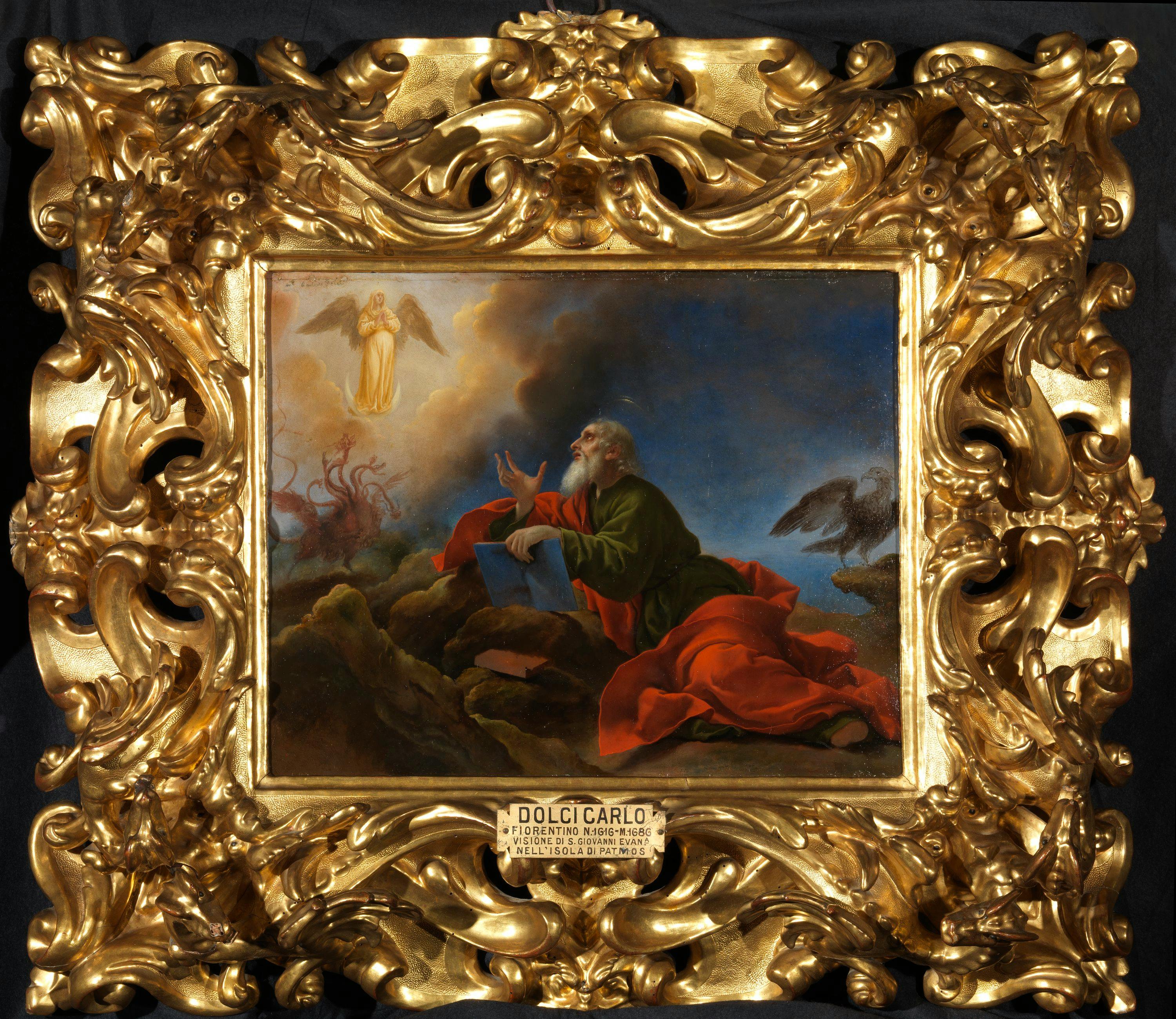St John the Evangelist in Patmos
Carlo Dolci (Florence 1616 -1687)
Inscriptions: “by Carlino Dolci” (top left); “∙ S∙ 1656 on Holy Thursday at the fifth hour, I commenced” (on the left side of the canvas)
The painting was part of the collection belonging to Grand Prince Ferdinando de’ Medici which also included ten other paintings by Dolci. It was recorded for the first time in the Poggio Imperiale Inventory of 1695, as one of the possessions of Vittoria della Rovere, which arrived after the census of 1691; it is described as a panel, probably due to the fact that the copper sheet is secured to a very fine wooden strip.
There were two other versions of this subject on large canvases, although traces of these have been lost. One of these belonged to Pier Francesco Rinuccini and another to the collection of Cardinal Giovan Carlo, in his palace in Via della Scala, and both were painted between 1657 and 1659. The small copper piece in the Palatine collection is therefore most probably a preparatory example, commenced on Holy Thursday in 1656, as shown by the inscription on the frame, where Dolci, at the height of devotional scruple, engraved the date and time on which he began work, in his usual slow, tidy hand.
The scene illustrates the episode narrated in the book of Apocalypse (XII, 1-6): the Evangelist, exiled on the Greek island of Patmos, receives a vision of the mulier amicta solis, elevated against a crescent moon and threatened by a terrible seven-headed dragon. Within an undefined space between the sky and the sea, bordered only by the background of the rocks, carefully edged with light, the figure of the saint extends through the foreground, supporting himself with effort on a book that is open enough to painstakingly reflect the shadow created by the hand. The facial expression is fixed and astonished; but the fulcrum of the whole composition is reserved to the theatrical gesture of the hand - certainly too expansive but also extremely elegant, directing the onlooker’s gaze towards a triumph of golden blaze, shown in every colour variation. Inside this is the small Virgin, standing out, together with the dancing monster, from the woodcut in the style of Durer’s Apocalypse cycle, printed in 1498. Dolci shows off his great skill as a painter of “small things”, as recognised by Baldinucci, focusing his concentration on the folds of the red mantle, the fuzzy hair and beard, the convoluted description of the monochrome dragon and eagle, using very little veiling and in some areas, limited to just a very fine outline. The copper creates a whole with the spectacular gilded wooden frame, which shows genuine virtuosity in the intertwined dragons’ heads that refer to the subject of the painting. The engraver, Cosimo Fanciullacci had prepared the frame for Giovan Carlo’s painting, and it is thought that he also created the Pitti frame, inspired by decorative models widely used in bronze sculptures from the late 16th century and specifically in the workshop of Pietro Tacca.
